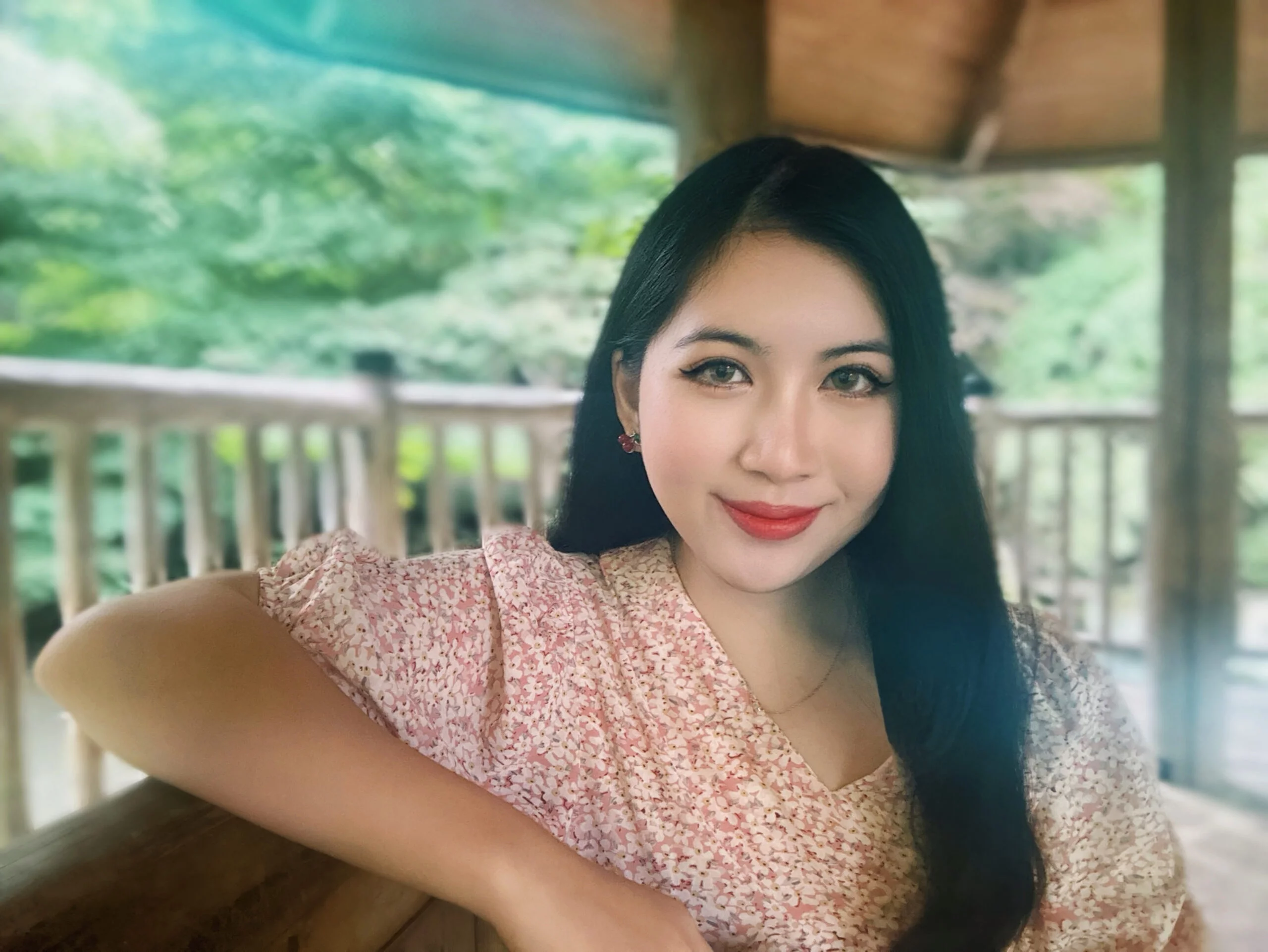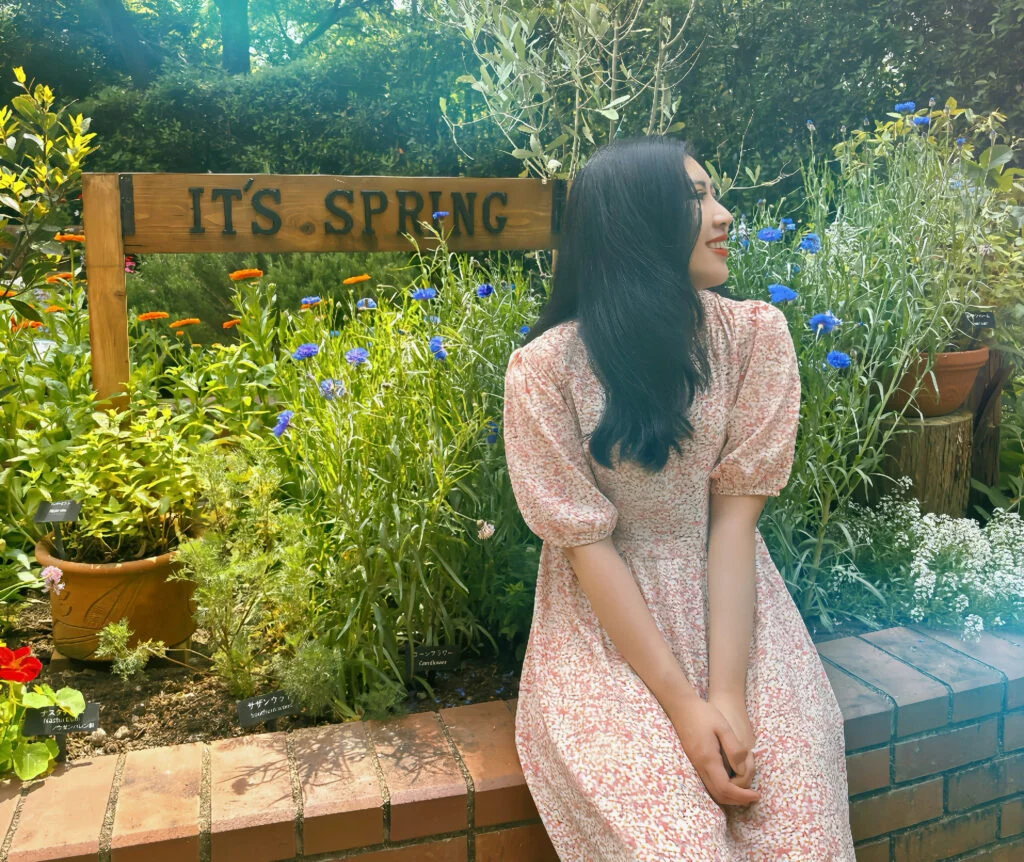
CREDIT: DOUBLE MISCHIEF STUDIO
Emi Araishi is rewriting the playbook of pop music with a bold shift from dance-pop to introspective country-pop, showcasing her versatility and innovative approach.
Emi Araishi emerges as a compelling figure in pop music, captivating audiences with her seamless transition from vibrant dance-pop anthem to soul-stirring country-pop ballad. Her latest single, “Daydream,” represents a poignant departure from the irresistibly catchy hooks of her debut single “#1,” delving into heartfelt themes of longing and introspection. In this exclusive interview, Emi shares insights into the creative journey that led her to embrace this genre shift, reflecting on the influences that have shaped her musical evolution.
Singular Culture: Emi, congratulations on your latest release “Daydream”! It’s quite a departure from your debut single “#1,” which is a dance pop track. What inspired this shift in genre, and how do you feel about the response to both songs?
Emi Araishi: Thank you! Yes, it’s a significant departure from my dance-pop single “#1”. The emotional lyrics of “Daydream” inspired me to create a ballad. I aimed for something deeply expressive and melancholic, reflecting themes of longing and desire. Initially, many were surprised by my genre shift, especially with my move towards country-pop. However, after the release, the response has been pretty positive. It’s truly heartening to see people resonating with the music and enjoying it.
“Daydream” marks your first foray into country pop. What made you decide to explore this genre, especially after the dance pop vibe of “#1”? How did your upbringing and musical influences play a role in this decision?
Yes, “Daydream” marks my debut in the country-pop genre. Growing up in Singapore, I was exposed to a wide variety of music, from mainstream pop to country-pop and classical. Artists like Shania Twain and Carrie Underwood had a profound impact on my musical tastes from a young age. I distinctly remember falling in love with Taylor Swift’s country-pop music during my elementary school years, which really cemented my connection to the genre.
As a music producer, I’m driven by a passion for exploring different genres and constantly challenging myself creatively. Making a country-pop track felt like a natural progression for me, even though it presented its own set of challenges. The journey has been incredibly rewarding—I’ve been able to create music that not only reflects my personal experiences but also resonates deeply with listeners. It’s been an amazing ride, and I’m excited for what’s to come.
You collaborated with Tate-Madison Bell on “Daydream.” How did this collaboration come about, and what unique elements did she bring to the song?
I began writing “Daydream” three years ago with Tate-Madison Bell over Zoom, during the challenging period of the Covid-19 pandemic. Tate brought the initial lyric idea to the table and performed it on guitar, with phrases like “brazen fights” and “pent-up truths” really catching my attention. We worked closely on the melody, and I wrote the lyrics for the bridge section. Surprisingly, we managed to finish writing the song in just two Zoom sessions, and everything clicked effortlessly.
At that time, I was still in my final year of college, juggling heavy coursework, which unfortunately delayed the release of “Daydream” until recently. After graduating last year, I resumed where we left off, diving back into production and recording the song. Tate is genuinely a very sweet person, and collaborating with her was an absolute joy. Her unique insights and musical contributions added depth and richness to “Daydream,” making it a project that I’m truly proud of.

CREDIT: DOUBLE MISCHIEF STUDIO
Could you describe the creative process behind both “#1″ and “Daydream”? How did your approach differ between these two singles, and what did you learn from each experience?
The creative processes behind “#1” and “Daydream” were quite distinct. For “#1,” being a dance-pop track, my focus was heavily on production elements like selecting synths and creating “ear candies.” Interestingly, the chorus melody and the phrase “you’re my #1” came to me spontaneously while I was in the shower. It’s funny how many of my song ideas start in the shower—I have to keep singing until I can get out and record them, or I risk forgetting the melody!
On the other hand, with “Daydream,” my approach was more focused on music arrangement and instrumentation. I wrote a full score with detailed parts for various instruments, created a demo, and then sent it off to musicians to record as per the score. Vocal layering was also a significant aspect of “Daydream.” I incorporated multiple vocal layers in the chorus singing “ah,” subtly mixed to add depth without overpowering the music.
From these experiences, I learned the importance of adapting my creative process to suit the genre and style of each song. “#1” taught me the spontaneity of capturing ideas as they come, while “Daydream” emphasized meticulous planning and orchestration. Both approaches have enriched my understanding of music production and songwriting.
Your two songs showcase your talent as both a singer-songwriter and a music producer. What initially drew you to production, and how has this aspect of your career evolved over time?
I’ve loved singing since I was a kid. According to my mom, even before I turned 5, I was already a huge fan of Britney Spears and Gwen Stefani, singing their songs non-stop. From a young age, I knew I wanted to be a singer, but it wasn’t until I was 14 that I realized I needed my own songs to truly make my mark. That’s when I started songwriting, usually just me and the piano.
Initially, it felt great to express myself this way, but soon I realized that to really bring my songs to life and make them professional, I needed to understand how to arrange and produce them. This realization led me to major in music production in college.
Can you describe your approach to music production? How do you typically begin a project, and what elements do you prioritize to create your music?
My approach to music production typically begins once the melody and lyrics are set. First, I focus on determining the chords that complement the melody. Once the chord progression is finalized, I use the piano or synth to create a simple backing track, over which I begin crafting a foundational drum beat.
I’ve curated a sound library that includes my favorite sounds and samples, allowing me to quickly explore various textures and tones in my productions without overthinking. You might notice some familiar sounds across different tracks as a result of this approach. Additionally, I enjoy designing my own synths using synthesizers, which I integrate into my productions to add unique elements.
During the music arrangement process, if I ever feel stuck or need inspiration, I like to experiment by improvising on my keyboard. This approach led to the creation of the funky bassline in “#1.” It’s a method that allows me to explore different musical directions and find creative solutions to challenges in my production workflow.
How has your production style evolved from your early work to your recent releases like “Daydream”? Have there been any defining moments or experiences that shaped this evolution?
To be honest, my production style has undergone a whirlwind of evolution. When I first entered college five years ago, I struggled with production. I knew how to use Logic Pro, but I lacked a deep understanding of the art behind it. Fortunately, I met peers who were skilled producers and generously shared their knowledge with me. Learning from them was invaluable.
Initially, I leaned towards R&B in my early production days. However, I’ve always been eager to explore different genres, and over the years, I’ve experimented with various styles, including Afro beats. This openness to diverse influences and experiences has been instrumental in shaping my evolving production style, culminating in recent releases like “Daydream.” Each genre exploration and learning experience has contributed to my growth as a producer, allowing me to continually refine my approach and expand my creative horizons.
For individuals just beginning their journey into music production, what advice would you offer based on your experience? Are there particular skills or mindsets they should focus on developing?
For those new to music production, I would advise not to hesitate in pushing boundaries and exploring as much as possible. Personally, I don’t prioritize maintaining a specific sound; I aim to surprise listeners with each new track. Every song is unique, driven by its own inspiration, so there shouldn’t be a rigid expectation of a “certain sound.”
In terms of mindset, it’s crucial not to fear trying new things. Throughout my music journey, I’ve encountered multiple failures and continue to learn from them. These experiences are invaluable lessons that help me grow and improve. Remember, nobody is the best at everything—every day presents an opportunity to learn and refine your craft.
Maintain a balance of humility and confidence in your work; being overly confident can hinder your ability to surpass your own achievements. Embrace each day as a chance to expand your skills and create something remarkable.
Considering your exploration of different genres, where do you see your musical journey taking you next? Are there specific genres or themes you’re eager to explore in future releases? What are your goals and dreams in your music career?
I’m really excited about where my music is heading. Right now, I’m eager to dive deeper into dance music, dance-pop, commercial pop, and maybe even explore some alternative pop vibes.
I’m also really looking forward to collaborating with other musicians and songwriters, as well as anyone passionate about making music together. Two heads are always better than one when it comes to creativity! I’ve got a lot of exciting plans lined up for next year and beyond that I can’t reveal yet—loads to look forward to!
My main goal is to release music that not only I’m proud of but that also resonates deeply with listeners. Connecting with people through music is incredibly fulfilling for me—it’s what drives me to evolve as an artist.
On a personal level, attending events like ADE (Amsterdam Dance Event) is a dream come true. As a huge fan of dance music, being part of such an event would be a major highlight. It’s not just about networking; it’s about immersing myself in the dance music community, learning from others, and gaining new insights that can inspire my own musical journey.
If you haven’t already, now is the perfect time to immerse yourself in Emi Araishi’s captivating sound. From the infectious rhythms of “#1” to the reflective sincerity of “Daydream,” her music offers a rich tapestry of emotions and melodies. Listen to her singles on your preferred streaming platform and discover why Emi Araishi is a rising star in the music industry.
Join the journey and let Emi Araishi’s music resonate with you. Whether you’re drawn to dance-pop beats or poignant ballads, there’s something in her music for every listener.
